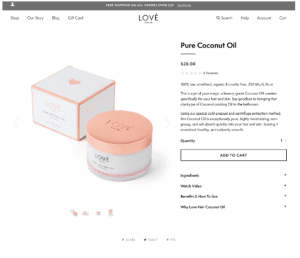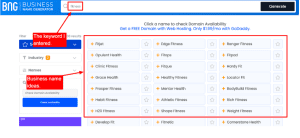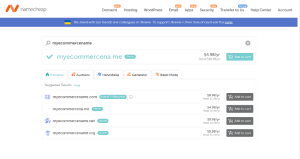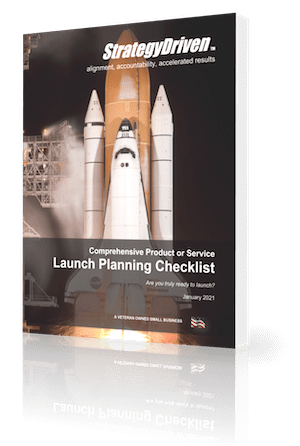The Ultimate Guide To Bootstrapping Your First Ecommerce Business

You are going to face multiple challenges and they’re often not straightforward and easy to address. Despite all the challenges, however, you can still succeed if you get proper guidance.
In this guide, we’ll cover the basics that you need to know when bootstrapping your first e-commerce business.
Find the right business idea
Finding the right business idea is a challenging task. You must consider many factors, such as the market size, skillset, and budget.
So how do you know if an idea is good enough? Ask these questions when evaluating a business idea:
Is there a demand for the product or service?
Is it something people need? And how many people need it?
How much money are people going to spend on it? Is this something people are willing to spend money on now or later down the line?
Does it solve problems? Or does it create new ones?
Once you’ve found an idea worth pursuing, it’s time to develop your business plan. A good plan helps you make smarter decisions as you move forward with your business.
Find a domain name
Choose domain names that are easy to spell, memorable, and relevant to your niche. For example, if you sell pet products, consider using PetProductsStore.com.
Start by brainstorming some options. There are business name generator tools where you can type in your industry (or keyword) then the platform will come up with several business names.******
After you’ve chosen a business name, check out what’s available on domain registrars like GoDaddy or NameCheap.
Choose a domain name like www.myecommercename.com or www.myecommercename.net, which costs you yearly but is easy to remember and looks professional.
Alternatively, some hosting providers provide free subdomains like myshopnamehere.wordpress.com or myshopnamehere.blogspot.com.
However, it doesn’t look professional, and it’s not SEO-friendly because search engines won’t be able to index your blog posts correctly if they see an URL like that.
Get hosting
Hosting is the backbone of your store and where your website lives on the internet.
It’s possible to get hosting from any number of places, but there are three ideal options: Shopify, WooCommerce, and BigCommerce.
These platforms are easy to use online store builders which is perfect when starting your first e-commerce store.
Each platform has its strengths, so you must first decide the type of content and the functions most suitable for your business.
Add products to your online store

This is a standard process that involves uploading pictures of your products, writing descriptions of them, and setting prices.
You need to briefly describe what your product is about.
Ensure your customers understand what they are buying and why they should buy.
Suppose you’re in the behavioral health software industry; your description should reflect why you have the best aba data collection software and why customers should subscribe.
Use the right marketing strategies
The right marketing strategy brings success to your online store. If you don’t clearly understand how to market your product, you’ll waste time and money on strategies that don’t work.
The first step in any marketing strategy is figuring out whom you’re talking to.
To tailor your marketing message accordingly, you need to know the demographics of your target audience (e.g., age, gender, and income level).
Personalizing your marketing materials helps you reach more people and get them interested in your product or service.
If you’re selling something like clothing or jewelry, it doesn’t matter if your target audience is male or female because they’ll be interested in what you’re selling.
But suppose you’re selling a cosmetic product. In that case, it’s essential to know if it’s usually men or women who buy this to tailor your messaging accordingly.
Your target audience may also have different needs at different times (e.g., homeowners vs. renters).
This information helps inform the way that you market yourself and the content on your website so that people looking for homeowners insurance see something different than someone.
Optimize your e-commerce website for search engines
Optimize your product pages for the search engines so it’s more visible on the search engine results pages.
To optimize your pages, add relevant keywords in the product descriptions, titles, and tags so that search engines quickly identify and index them for users to find.
There’s a myriad of ways to optimize your pages, but being mindful of your keyword placements is a good start.
You may also want to use tools like Google Keyword Planner or Ahrefs Keywords Explorer to find out which keywords to optimize your product pages.
Another way to increase your rankings in search engines is to buy engaging seo articles. With carefully crafted articles, people will start linking back to your posts organically.
Generate traffic to your e-commerce site
You’ve found a product, and your website is ready. The next step is to generate traffic to your e-commerce site that converts. There are two main ways to generate traffic: paid and organic.
Paid traffic is when you pay money to get people to click on your ads and visit your site.
The most common form of generating paid traffic is through Google AdWords and Facebook Ads, which allows you to target users based on various criteria.
Tiktok Ads, Pinterest Ads, and Twitter Ads are also popular platforms for paid traffic.
Organic traffic comes from search engines like Google and Bing or your Social Media pages.
It’s essential to make sure the traffic you generate is high-quality and relevant to your niche. For example, if you’re selling API testing tools for programmers, you should get traffic from the software niche.
Analyze and improve
The key to building an e-commerce business is constantly analyzing and improving your product, website, and marketing.
Identify the gaps in your online store through SWOT analysis, review of your advertising and sales metrics, or other tools.
For example, if your site has low conversion rates, you must figure out whether it’s because of the UX or the product itself.
Once you’ve identified the areas for improvement, you must start testing different solutions until you find the one that works best for your customers.
Ready to get an e-commerce business going by yourself?
It is challenging to start an e-commerce business from scratch. After all, you get to decide on everything for your store.
Most people wouldn’t know where to begin their business planning, let alone execute their ideas. If you’re looking to bootstrap your first online store, following this guide helps get you on track.















Leave a Reply
Want to join the discussion?Feel free to contribute!